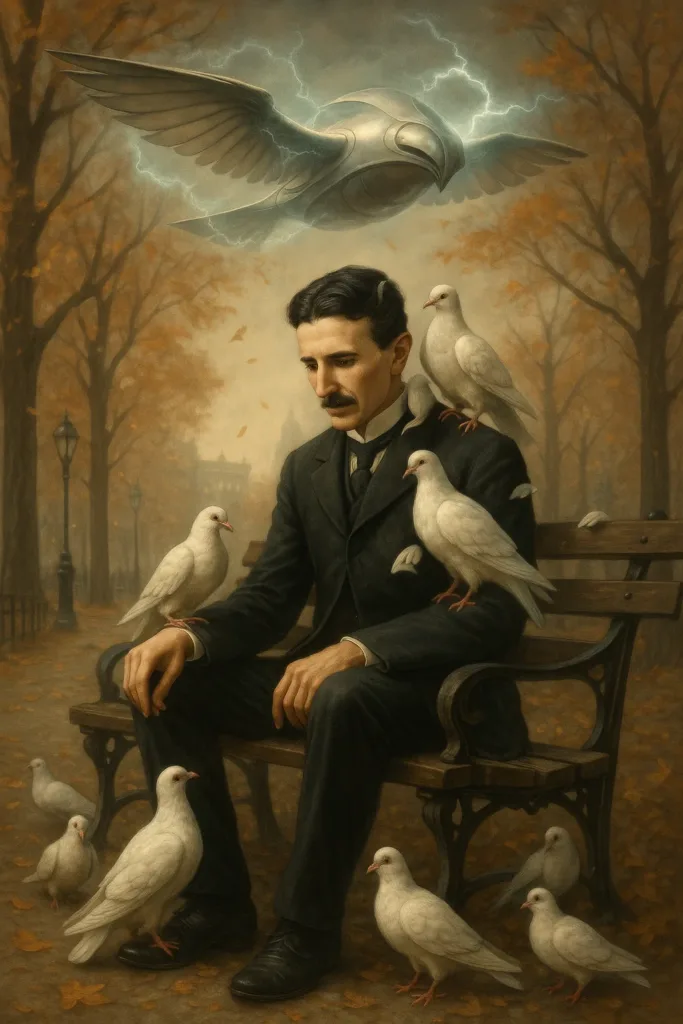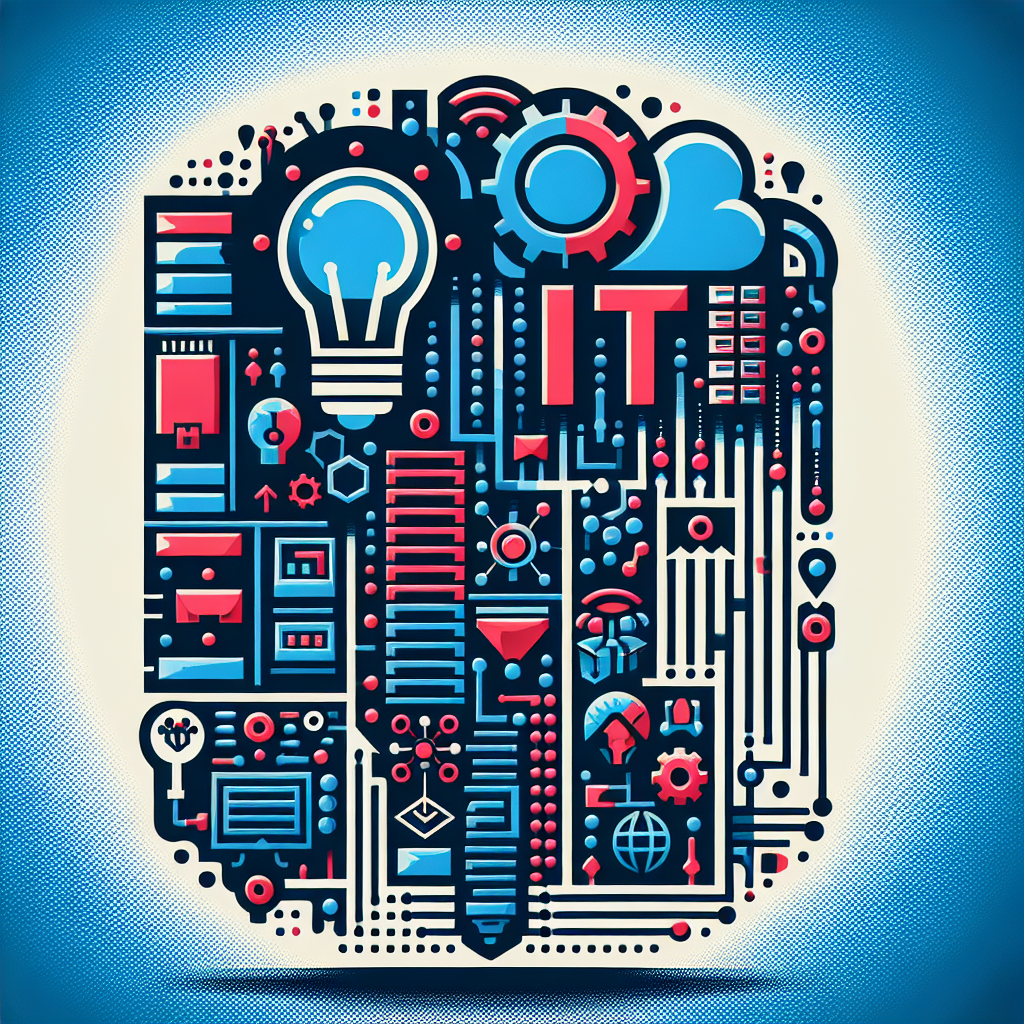Tesla was fascinated by birds, especially pigeons, but his reflections went far beyond affection—he explored their nature philosophically and saw in them a blueprint for future technology. It is no surprise, then, that these beautiful, feathered creatures inspired some of Tesla’s ideas and inventions.
Tesla’s Love for Pigeons
- In New York, he fed pigeons daily and had a special affection for a white female pigeon he described as his “spiritual guide.”
- In an interview for the New York Herald (1915), he said: “I love pigeons because they are a symbol of purity and freedom. Their flight is a perfect combination of mathematics and elegance—just like my alternating current motors.”
- When his favorite pigeon died, Tesla claimed to have seen a “beam of light emerging from her eyes,” which inspired new thoughts on energy transmission in nature.
A Theory of Birds and Aerodynamics
- Tesla believed birds used more than just wings—they relied on invisible Earth forces, such as atmospheric static electricity, to stay aloft.
- He wrote: “Birds do not fly merely with wings—they use forces that humans do not yet understand. Their flight reveals principles of universal energy.”
- Tesla insisted that future aircraft should mimic birds, not the rigid structures of balloons or zeppelins.
Birds as Inspiration for Inventions
- His work on the bladeless Tesla turbine was partly inspired by bird feathers—fluid flow around wings led him to envision machines without traditional moving parts.
- In his notebooks, Tesla also recorded studying the avian heart to design more efficient pumps for fluid circulation.
Metaphysical Thoughts on Birds
- Tesla considered birds to be “living receivers of cosmic energy.”
- In a letter to a friend (1937), he wrote: “Pigeons know where to find food even in darkness—because they are tuned into the Earth’s magnetic field. That’s a natural wireless communication system.”
- He believed the bird brain operated on high frequencies, similar to his own oscillators.
Fun Fact: Tesla’s “Pigeon Garden”
In the hotel where he lived in New York, Tesla requested small platforms be installed on his windows for pigeons to rest. He claimed they “brought him ideas in his dreams.”
Tesla’s Turbine – A Detailed Analysis
Patent Year: 1913 (US Patent 1,061,206)
Operating Principle: A bladeless turbine using the boundary layer effect and fluid viscosity to generate rotational motion.
How It Works
- Key components:
- A series of thin, parallel metal disks (usually 9–12) mounted on a shaft.
- Fluid (air, steam, water, or fuel) enters tangentially between the disks.
- Due to viscosity, the fluid “sticks” to the disks and spins them—without blades.
Advantages:
- Higher efficiency – fewer losses from friction and turbulence.
- Simpler construction – no fragile blades.
- Wide application – suitable for air, steam, and even biological fluids like blood.
Why Didn’t It Go Mainstream?
Technical challenges:
- Optimal operation at 50,000–100,000 RPM – required materials unavailable in Tesla’s time.
- Difficult to scale up – small models worked well, but larger industrial units were impractical.
Economic reasons:
- Tesla failed to attract major investors – considered “too far ahead of his time.”
- Industry resisted changing established infrastructure.
Modern Applications
- Oil industry – pumping viscous fluids.
- Medicine – prototype blood pumps.
- Experimental vehicles – some compressed-air engines use Tesla turbines.
- NASA – exploring use in extreme space environments.
Has Anyone Tried to Improve It?
- 1950s–60s: New designs with advanced materials (ceramics, carbides).
- 2006: Phoenix Navigation & Guidance Inc. patented a hybrid Tesla turbine for rocketry.
- 2020s: Startups like Tesla Turbine Industries develop versions for renewable energy.
Tesla’s Claims
- Claimed efficiency up to 95% (conventional turbines reach up to 60%).
- Modern prototypes in labs reach around 80%.
- Planned to use it for geothermal energy, including the power of Niagara Falls.
Tesla’s Bird-Inspired Flying Machine Concepts
VTOL Aircraft Patent – US 1,655,113 (1928)
Inspiration: Birds’ takeoffs and landings (hawks, ravens).
- Aircraft with movable wings that adjust angle for vertical lift.
- Electric propulsion – more efficient than piston engines.
- Capable of hovering – similar to a helicopter.
Why It Was Never Built:
Materials and electronics of the time weren’t advanced enough.
“Flying Car” (Hybrid of Plane and Helicopter) – Unpatented Prototype
- Idea: Vehicle with four rotating wings (similar to modern drones).
- Powered by electromagnetic fields – no traditional propellers.
- Not patented, but described in Tesla’s notes.
Wireless Aircraft Propulsion (Theoretical Concept)
- Aircraft would receive energy wirelessly—from Tesla towers.
- Inspired by birds using wind and thermal currents without flapping.
- Unrealized due to technological limitations.
Aerodynamic Design Based on Birds
- Owl wings – silent flight.
- Seagull curvature – more efficient lift.
Conclusion
Tesla didn’t just observe birds—he listened to them, analyzed them, and understood them. His ability to perceive invisible forces of nature in everyday life led to brilliant, though often unrealized, inventions. His fascination with birds remains a testament to the idea that science and nature are not opposed, but rather two sides of the same cosmic truth.
Coming Soon on MilovanInnovation:
We continue our Tesla series with an intriguing new post:
“The Philadelphia Experiment: Tesla’s Ideas and Patents Behind the Urban Legend”
Was there any truth behind the mysterious disappearance of a warship? What role could Tesla’s wireless energy and invisibility theories have played? Don’t miss the next episode.


Leave a Reply